Czech Easter is intertwined with many traditions, including the art of pastry-making. In the past, a variety of pastries were made exclusively for specific occasions and served as symbolic rituals for the community. An example of this tradition is jidáše, which are traditionally baked on Maundy Thursday (Zelený čtvrtek) during Easter week.
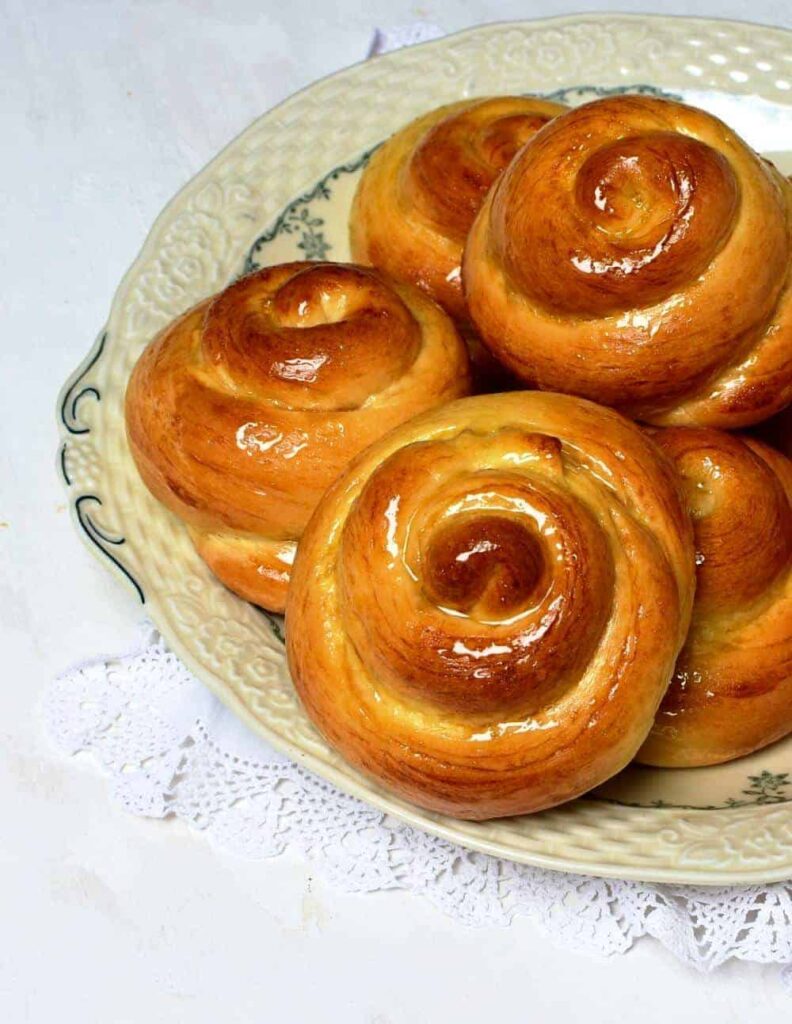
➜ What are Jidase?
Jidáše (plural) are a kind of sweet pastry made from yeast dough, and right after baking, they are glazed with honey. Jidáše are formed into various shapes, most frequently spirals or knots.
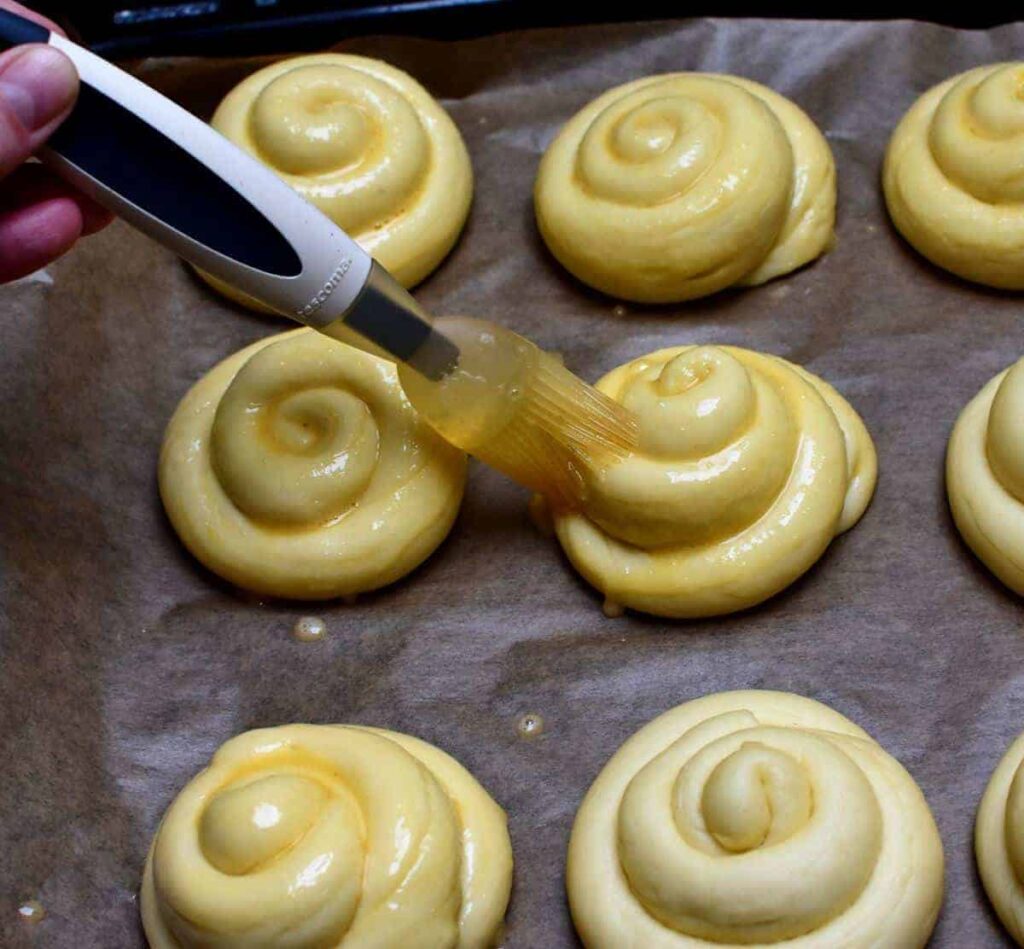
Jidáše are shaped to look as if they were made from a rope on which the apostle Judas hanged himself after he had betrayed Jesus. And that’s where the Czech pastry Jidáš (Judas) got its name from!
➜ When are Jidáše baked?
Jidáše are baked on Holy Thursday before Easter (in some Czech regions, they are baked a day later, on Good Friday, "Velký pátek"). Holy Thursday is translated as "Zelený (green) čtvrtek" in Czech.
According to folklore, Jidáše are glazed with honey because it is believed that eating honey on Maundy Thursday protects against snake bites and poisoning in general.
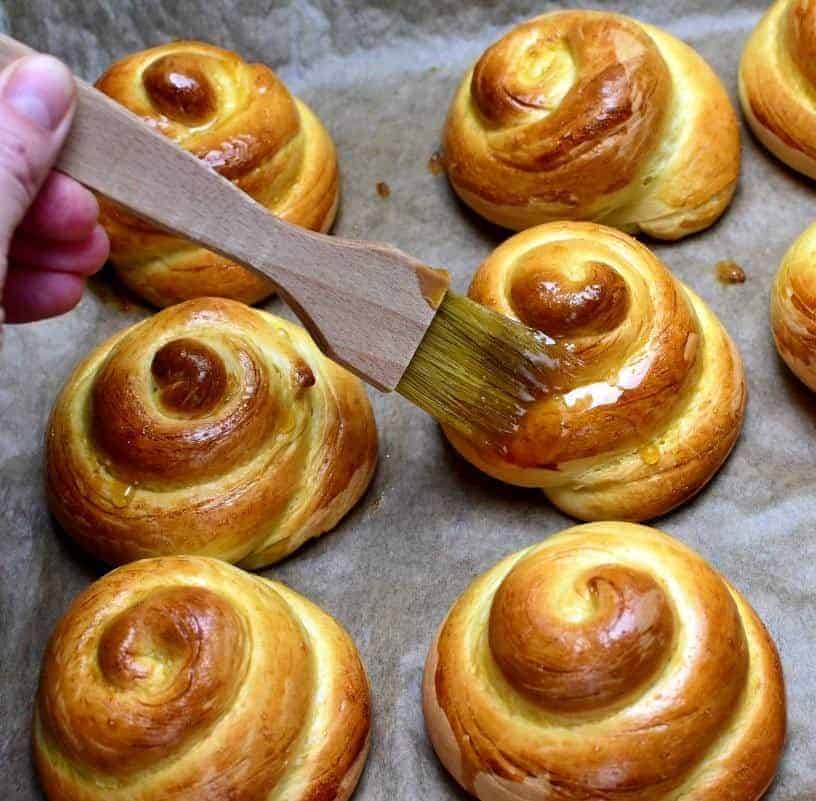
➜ Tips for preparing sweet yeast dough
Jidáše are baked from sweet yeast dough. To guarantee success, you should follow a few basic rules. Here are some tips on how to master the yeast dough better.
Work with eggs at room temperature, butter softened at room temperature, and lukewarm milk. The yeast contains living bacteria, and you can support its activating under ideal conditions—a temperature of about 85°F (30°C).
The eggs should be used at room temperature, too.
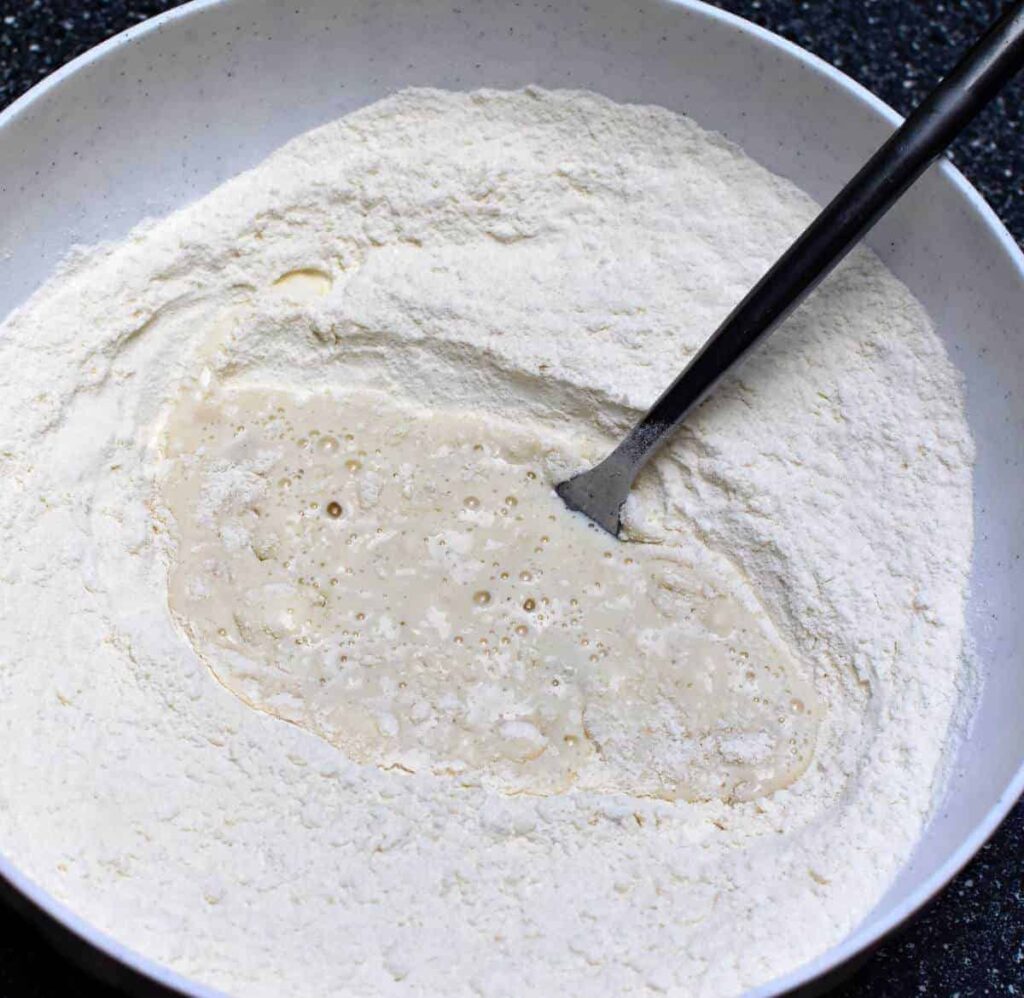
Kneading the dough well is imperative. It’s the basic requirement for the dough to be soft and springy, easy to roll, and for the Jidáše to keep their shape.
I knead the dough with my hands (the best instrument for kneading!) The only problem is that it takes about 10 minutes, and it´s quite physically demanding.
If you have a stand kitchen mixer with a kneading hook, you can surely use it. Using this tool will save you a lot of work and time.
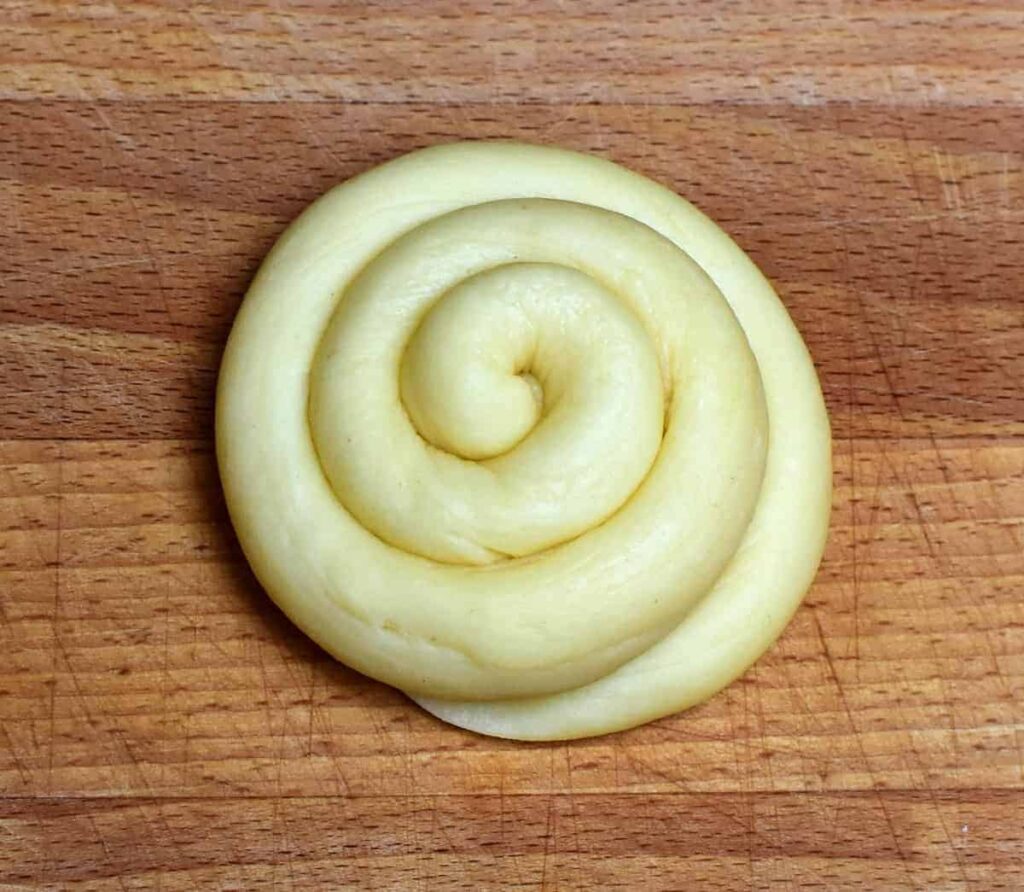
The dough in this recipe rises in three stages (really!). First 2x 30 minutes (follow instructions in the recipe), and after forming Jidáše from the dough, you have to let them leaven for a further 45 minutes.
⤍ Learn how to make dough rise in the oven.
More Czech Easter Dishes:
- Mazanec – Czech Easter sweet bread
- Velikonční nádivka – Easter stuffing
- Beránek – Easter lamb cake baked in a mold
- Sweet braided Easter bread
Tried this recipe?
Leave a review down in the comments! ⭐⭐⭐⭐⭐
Other readers and I love hearing what you think. Stay in touch by following me on Facebook and Pinterest. For more Czech stuff, subscribe to my newsletter!
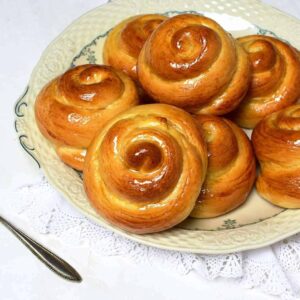
Jidáše - Czech Easter Sweet Pastry
Tap or hover to scale
Ingredients
- 4 cups all-purpose flour
- 1 ¼ cups milk lukewarm
- 2 ½ teaspoons active dry yeast (I used 30 g fresh yeast)
- ⅔ stick unsalted butter melted and a bit cooled
- 2 egg yolks
- ⅓ cup granulated sugar
- ¼ teaspoon salt
- 1 egg for egg wash
- 2 Teaspoons honey to glaze Jidáše after baking
Instructions
- Put 4 cups all-purpose flour into a bowl and make a well in the middle.
- Pour in two-thirds of the lukewarm milk. Add ½ teaspoon of sugar and 2 ½ teaspoons active dry yeast. Take a fork and stir the flour in from the sides until a small puddle of semiliquid batter forms in the middle. Dust its surface slightly with flour and let it rise for 30 minutes.
- Meanwhile, melt ⅔ stick unsalted butter. It shouldn’t be hot, just warm.
- Add the melted butter to the bowl with activated yeast, add 2 egg yolks, ¼ teaspoon salt, and the rest of the lukewarm milk and sugar.
- Stir everything together with a wooden spoon, then knead the mixture until it turns smooth and stiff and doesn’t stick—or it is sticky only a little bit. I knead and fold the dough with my hands on a dusted kitchen worktop for 10 minutes. Don´t underestimate this step.
- Let the dough rise for a further 30 minutes.
- Divide the raised dough into pieces of about 2 ½ oz (80 g) each. Roll each piece into a string about 10 inches (25 cm) long and ⅔ inch (1.5 cm) thick, then form a spiral. Flatten the end of the string and tuck it under the spiral so that the Jidáš doesn't roll up on itself during baking.
- Transfer Jidáše to a baking tray lined with parchment paper, cover them with a clean towel, and let them rise for 45 minutes.
- Heat the oven to 360 °F.
- Whisk 1 egg in a separate bowl to make egg wash, and brush the raised Jidáše with it.
- Bake Jidáše for 15 minutes until they turn golden brown.
- Melt 2 Teaspoons honey so it gets liquid, and glaze Jidáše right after taking them out of the oven.
Notes
- The basic recipe makes about 10–15 pieces of Jidáše pastry, depending on their size.
- Jidáše glazed with honey are sticky, but it should be that way; it is honey after all. The sooner you glaze them, the less sticky their surface will be.
- Like all yeast dough pastries, Jidáše taste best on the day they are baked.
Nutritional estimate pro serving
In making this recipe, I was inspired by the legendary Czech cookbook written by Roman Vaněk: “Velká kuchařka Čech a Moravy”.
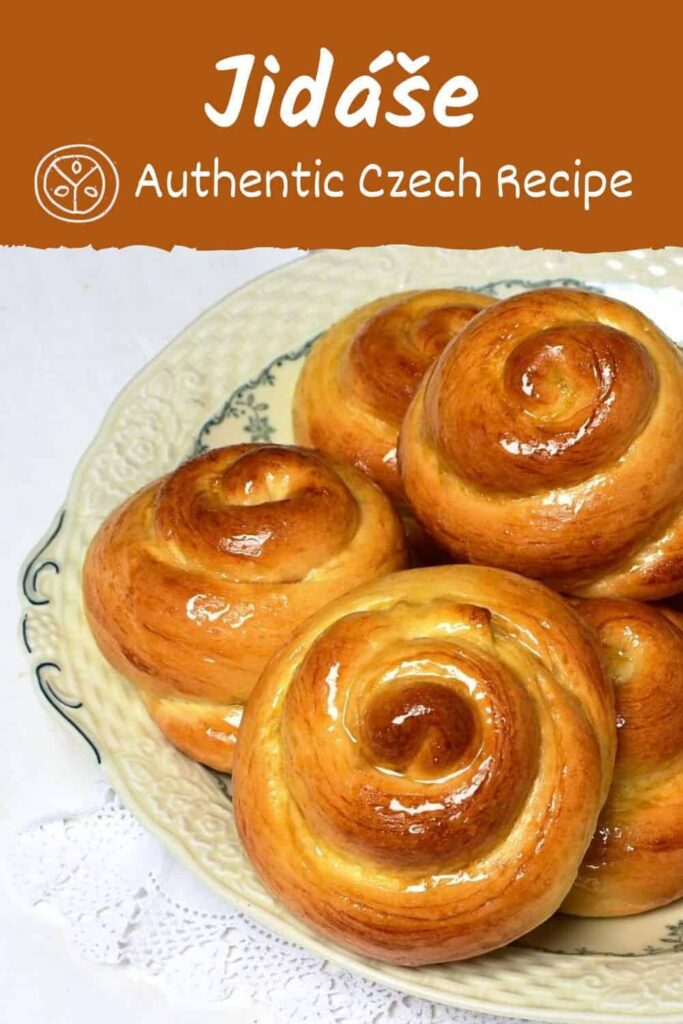



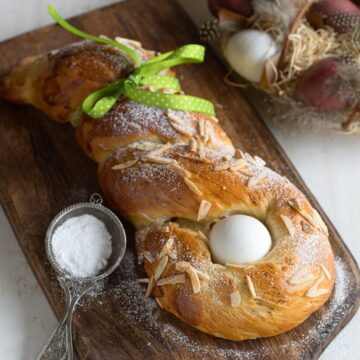

Anonymous says
Thank you for your recipes! I hope to make these next week for Easter. Please post more traditional dishes, they're great 🙂
Petra Kupská says
Ahoj, thank you very much for your pleasing comment! Let me know how did the Jidáše pastry turn out 🙂 I’m working on more traditional Czech recipes, I will post as much as I can 🙂 Many greetings from the Czech Republic and Happy Easter!
Dennis Williams says
Your recipes are an inspiration. Baking Jidase today and 15 minutes is not nearly long enough; I added ten minutes. Also, the baking rise obliterated the sharply defined spiral. Any suggestions?
Anicka Cooklikeczechs.com says
Ahoj Dennis, thank you for your comment. Sourdough is sometimes alchemy, it often depends on the type of flour and how absorbent it is (some types of flour absorb more liquid than others). I recommend raising the temperature rather than letting the pastry bake longer. Hopefully this will help and your next baking will be a success!